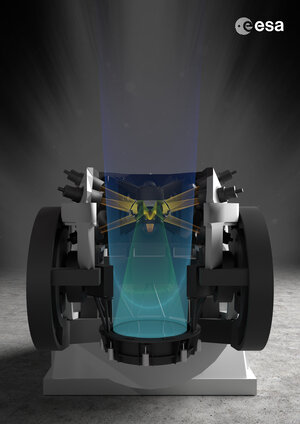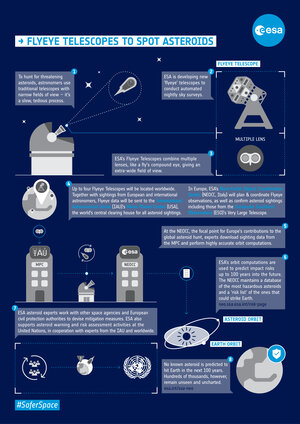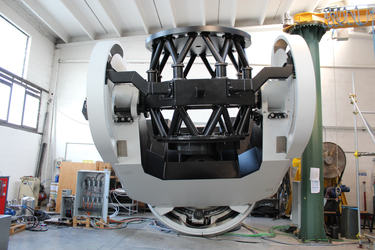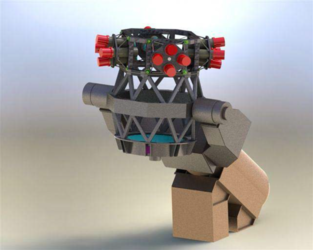Accept all cookies Accept only essential cookies See our Cookie Notice

About ESA
The European Space Agency (ESA) is Europe’s gateway to space. Its mission is to shape the development of Europe’s space capability and ensure that investment in space continues to deliver benefits to the citizens of Europe and the world.
Highlights
ESA - United space in Europe
This is ESA ESA facts Member States & Cooperating States Funding Director General Top management For Member State Delegations European vision European Space Policy ESA & EU Space Councils Responsibility & Sustainability Annual Report Calendar of meetings Corporate newsEstablishments & sites
ESA Headquarters ESA ESTEC ESA ESOC ESA ESRIN ESA EAC ESA ESAC Europe's Spaceport ESA ESEC ESA ECSAT Brussels Office Washington OfficeWorking with ESA
Business with ESA ESA Commercialisation Gateway Law at ESA Careers Cyber resilience at ESA IT at ESA Newsroom Partnerships Merchandising Licence Education Open Space Innovation Platform Integrity and Reporting Administrative Tribunal Health and SafetyMore about ESA
History ESA Historical Archives Exhibitions Publications Art & Culture ESA Merchandise Kids Diversity ESA Brand Centre ESA ChampionsLatest
Space in Member States
Find out more about space activities in our 23 Member States, and understand how ESA works together with their national agencies, institutions and organisations.
Science & Exploration
Exploring our Solar System and unlocking the secrets of the Universe
Go to topicAstronauts
Missions
Juice Euclid Webb Solar Orbiter BepiColombo Gaia ExoMars Cheops Exoplanet missions More missionsActivities
International Space Station Orion service module Gateway Concordia Caves & Pangaea BenefitsSpace Safety
Protecting life and infrastructure on Earth and in orbit
Go to topicAsteroids
Asteroids and Planetary Defence Asteroid danger explained Flyeye telescope: asteroid detection Hera mission: asteroid deflection Near-Earth Object Coordination CentreSpace junk
About space debris Space debris by the numbers Space Environment Report In space refuelling, refurbishing and removingSafety from space
Clean Space ecodesign Zero Debris Technologies Space for Earth Supporting Sustainable DevelopmentLatest
Applications
Using space to benefit citizens and meet future challenges on Earth
Go to topicObserving the Earth
Observing the Earth Future EO Copernicus Meteorology Space for our climate Satellite missionsCommercialisation
ESA Commercialisation Gateway Open Space Innovation Platform Business Incubation ESA Space SolutionsLatest
Enabling & Support
Making space accessible and developing the technologies for the future
Go to topicBuilding missions
Space Engineering and Technology Test centre Laboratories Concurrent Design Facility Preparing for the future Shaping the Future Discovery and Preparation Advanced Concepts TeamSpace transportation
Space Transportation Ariane Vega Space Rider Future space transportation Boost! Europe's Spaceport Launches from Europe's Spaceport from 2012Latest
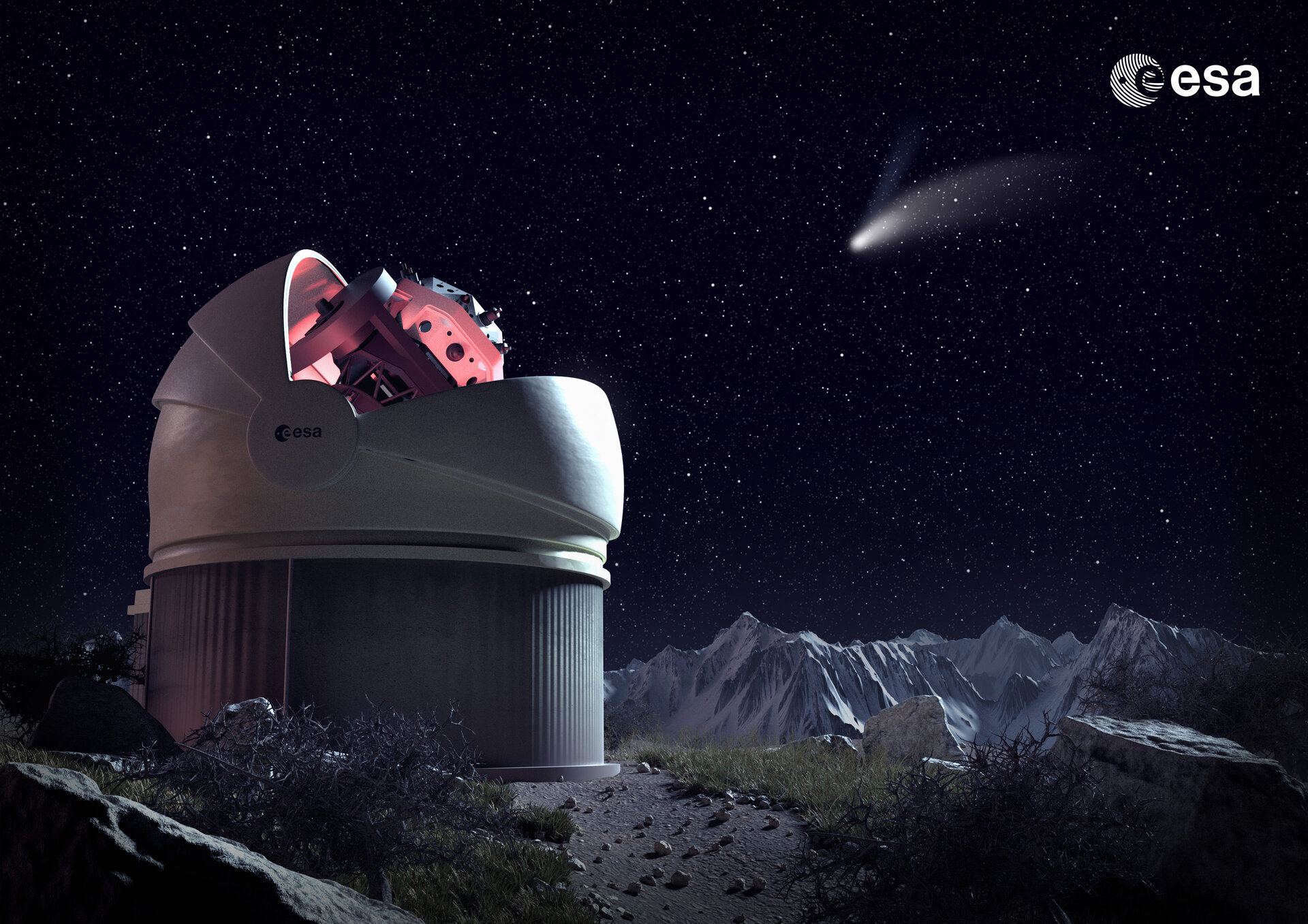
Flyeye Observatory
Thank you for liking
You have already liked this page, you can only like it once!
As part of the global effort to spot risky celestial objects such as asteroids and comets, ESA is developing a network of automated telescopes for nightly sky surveys. The ‘Flyeye-1’ telescope is the first in a future network that would scan the entire sky and automatically identify possible new near-Earth objects (NEOs) for follow up and later checking by human astronomers.
The Flyeye telescopes are named for their novel design that splits incoming light into separate channels in a similar manner to the compound eye of a fly, to expand the telescope’s field of view.
The development of the first-generation ‘Flyeye-1’ telescope began in 2016, when ESA signed a contract with a European consortium led by OHB Italy.
Inside the telescope, a single mirror collects the light from the full field of view and feeds it into a pyramid-shaped beam splitter with 16 facets that divides it into 16 separate tubes. The secondary lenses inside these tubes focus the light onto individual cameras, subdividing a region of the sky into 16 smaller images to expand the telescope's field of view.
The Flyeye-1 telescope has a diameter of 1 m and a field of view of 45 square degrees, where 1 square degree covers an area in the sky roughly four times as large as the Moon as seen from Earth. Telescopes of this size typically have a much smaller field of view.
The telescope will undergo final testing and validation at the Italian Space Agency’s (ASI) Centre for Space Geodesy in the city of Matera, Italy, in late 2024 and early 2025. Once complete, Flyeye-1 will be transported to the island of Sicily, Italy, for installation at a dedicated observatory near the top of Monte Mufara mountain.
The site and access road required for the construction of the observatory was made available by ASI. Construction began in June 2024 and is expected to be completed by the end of 2025, in time for the telescope’s arrival.
-
CREDIT
ESA/A. Baker -
LICENCE
CC BY-SA 3.0 IGO or ESA Standard Licence
(content can be used under either licence)














 Germany
Germany
 Austria
Austria
 Belgium
Belgium
 Denmark
Denmark
 Spain
Spain
 Estonia
Estonia
 Finland
Finland
 France
France
 Greece
Greece
 Hungary
Hungary
 Ireland
Ireland
 Italy
Italy
 Luxembourg
Luxembourg
 Norway
Norway
 The Netherlands
The Netherlands
 Poland
Poland
 Portugal
Portugal
 Czechia
Czechia
 Romania
Romania
 United Kingdom
United Kingdom
 Slovenia
Slovenia
 Sweden
Sweden
 Switzerland
Switzerland


























